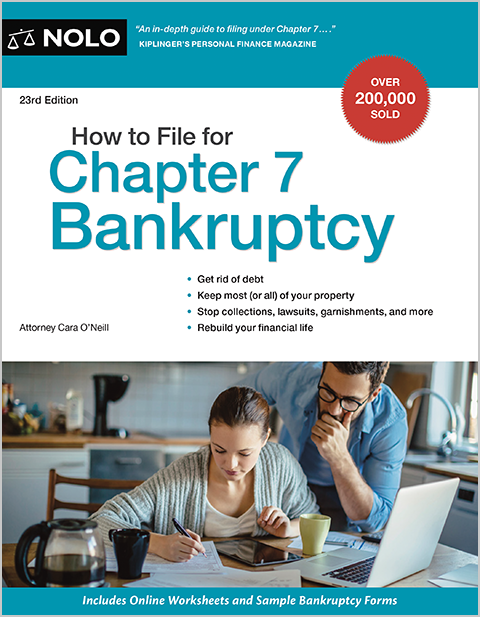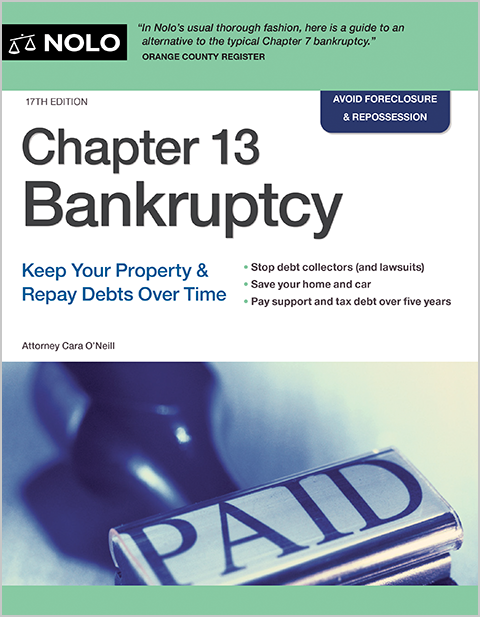In Chapter 7 bankruptcy, you can keep a leased car by assuming the car lease. You can also reject the car lease and return the vehicle to the dealer.
If you are leasing a car, truck, van, or another motor vehicle when you file for Chapter 7 bankruptcy, you have two options for the car lease—assume the car lease and continue with it or reject the car lease and terminate it. You can keep the vehicle if you assume the car lease, but you'll still owe lease payments, excess mileage fees, or other penalties after Chapter 7 bankruptcy. Learn more about:
- assuming and rejecting a car lease in Chapter 7 bankruptcy
- using Chapter 7 bankruptcy's Statement of Intention form, and
- other leases you'll accept or reject in Chapter 7 bankruptcy.
We have other articles to help you learn what happens to cars in bankruptcy. You'll find links to additional resources at the end of the article.
- Assuming a Car Lease in Chapter 7 Bankruptcy
- Rejecting a Car Lease in Chapter 7 Bankruptcy
- How to Assume or Reject a Car Lease in Chapter 7
- Other Leases You'll Accept or Reject in Bankruptcy
- Other Lease and Statement of Intention Requirements in Chapter 7 Bankruptcy
- Following Through With the Statement of Intention
- Leasing a Car After Chapter 7 Bankruptcy
- Need More Bankruptcy Help?
Assuming a Car Lease in Chapter 7 Bankruptcy
You can keep your leased vehicle, but you'll remain responsible for payments. Using legal terms, you "assume" the car lease when you agree to continue under the original car lease terms after Chapter 7 bankruptcy.
When the car lease expires, the dealer can charge you fees for excess mileage or damage to the vehicle as if you hadn't filed Chapter 7 bankruptcy. Similarly, if you fail to make timely payments on the car lease, the creditor can repossess the vehicle, just like before you filed for Chapter 7 bankruptcy, and sue you for the amount you still owe on the car lease contract.
Learn more about your car in Chapter 7 bankruptcy.
Rejecting a Car Lease in Chapter 7 Bankruptcy
You'll "reject" the car lease if you don't intend to continue paying for it. If you reject the car lease, you'll have to return or "surrender" the car in your Chapter 7 bankruptcy, but you won't be held responsible for more installment payments or fees for mileage or damage.
Rejecting a car lease might be a good idea if you're having trouble keeping up with your payments, have high mileage, or have costly damage. This option lets you turn the car in without further charges or liability.
How to Assume or Reject a Car Lease in Chapter 7
In Chapter 7 bankruptcy, you tell everyone involved—the court, the Chapter 7 bankruptcy trustee assigned to your matter, and creditors—what you want to do with your leased car on the bankruptcy form called the Statement of Intention for Individuals Filing Under Chapter 7 ("Statement of Intention").
Many people file the Statement of Intention form with the bankruptcy paperwork that starts the Chapter 7 case, but you have 30 days to file it. You'll want to file the Statement of Intention within the time limit, and here's why.
If you don't file the Statement of Intention form on time, the automatic stay order preventing the creditor from repossessing your car will lift. If this happens, the lender can pick up the vehicle.
Other Leases You'll Accept or Reject in Bankruptcy
The Statement of Intention form tells the creditor what you wish to do with other unexpired personal property leases and debts secured by collateral in Chapter 7 bankruptcy, such as a car loan or mortgage.
A lease is a contract in which you pay for the right to use property—such as a car, restaurant equipment, or cement mixer—for an amount of time. Personal property is essentially everything other than real estate.
Here's a list of typical leases you might need to include on the form:
- vehicle leases
- furniture and equipment leases (including rent-to-own contracts), and
- telephone, internet service, and utility equipment contracts.
You'll include secured property and leased personal property as assets on Schedule A/B: Your Property when filling out the Chapter 7 bankruptcy forms. If you still owe money on a contract—whether expired or not—you'll list the debt on Schedule D: Creditors Who Hold Claims Secured By Property or E/F: Creditors Who Have Unsecured Claims.
Other Lease and Statement of Intention Requirements in Chapter 7 Bankruptcy
Some creditors treat lease assumptions differently, so it is good to consult with a local bankruptcy attorney who can explain your options. For example, some creditors might ask you to sign another Statement of Intention form indicating you wish to assume a lease that isn't filed with the bankruptcy court.
Other creditors might ask you to sign a reaffirmation agreement, which is an agreement between you and your creditor stating that you will be liable for the contract under its original terms. Reaffirmation agreements are usually for vehicle purchase loans, but some bankruptcy judges approve them.
Following Through With the Statement of Intention
Some courts might treat your actions as evidence of your intentions, regardless of what you indicate on the Statement of Intention form. If you continue to make payments on the lease after your bankruptcy, the creditor might interpret your actions as evidence that you wish to assume the lease and argue that you should be held responsible.
If you are considering Chapter 7 bankruptcy and lease a vehicle, it is important to decide whether you can afford the payments or should return the car to the dealer. Then, make sure your actions match what you indicate on the Statement of Intention.
Leasing a Car After Chapter 7 Bankruptcy
Like most transactions after bankruptcy, you should expect to have a more difficult time leasing a car for the first year or two after your Chapter 7 bankruptcy. Although some car dealers will lease or sell vehicles soon after bankruptcy, you should expect to pay more than you would otherwise.
Your ability to lease a vehicle on good terms will improve with time. You'll want to focus on increasing your income and credit score as needed after bankruptcy. Learn more about improving credit after bankruptcy.
Need More Bankruptcy Help?
Did you know Nolo has made the law accessible for over fifty years? It's true, and we wholeheartedly encourage research and learning. You can find many more helpful bankruptcy articles on Nolo's bankruptcy homepage. Information needed to complete the official downloadable bankruptcy forms is on the Department of Justice U.S. Trustee Program.
However, online articles and resources can't address all bankruptcy issues and aren't written with the facts of your particular case in mind. The best way to protect your assets in bankruptcy is by hiring a local bankruptcy lawyer.
|
|
- Assuming a Car Lease in Chapter 7 Bankruptcy
- Rejecting a Car Lease in Chapter 7 Bankruptcy
- How to Assume or Reject a Car Lease in Chapter 7
- Other Leases You’ll Accept or Reject in Bankruptcy
- Other Lease and Statement of Intention Requirements in Chapter 7 Bankruptcy
- Following Through With the Statement of Intention
- Leasing a Car After Chapter 7 Bankruptcy
- Need More Bankruptcy Help?

